For the last day I spent on Easter Island I decided to give myself a treat by renting a car. In addition, I had no more will, desire and strength to walk. And also, there were still some things scattered around the island which I wanted to visit and see. Finally, I agreed with the rental company to return the car at the airport the day after and thus I actually transported myself and my stuff to the airport instead of taking a taxi and everything turned out perfectly.
Thus, when I got up in the morning I asked my landlady to call rent-a-car, which she kindly did. Although later than I hoped, they did come to pick me up and took me to the agency. I found it all very interesting, as that was the first time I rented a car alone. I got a bright-red wobbly small Suzuki SUV and I first headed for Puna Pao.
Puna Pao is a chiselling site, a quarry, surrounded by hillocks. I passed by one of them, but on the other side, the day when I walked to Ahu Akivi. Puna Pao may be reached by a dirt road which provides access to cars and when you get to the quarry you can see around numerous scattered pukaos – the red hats used to be made precisely here, for this is the only place where the volcanic rock is red and good for chiselling.
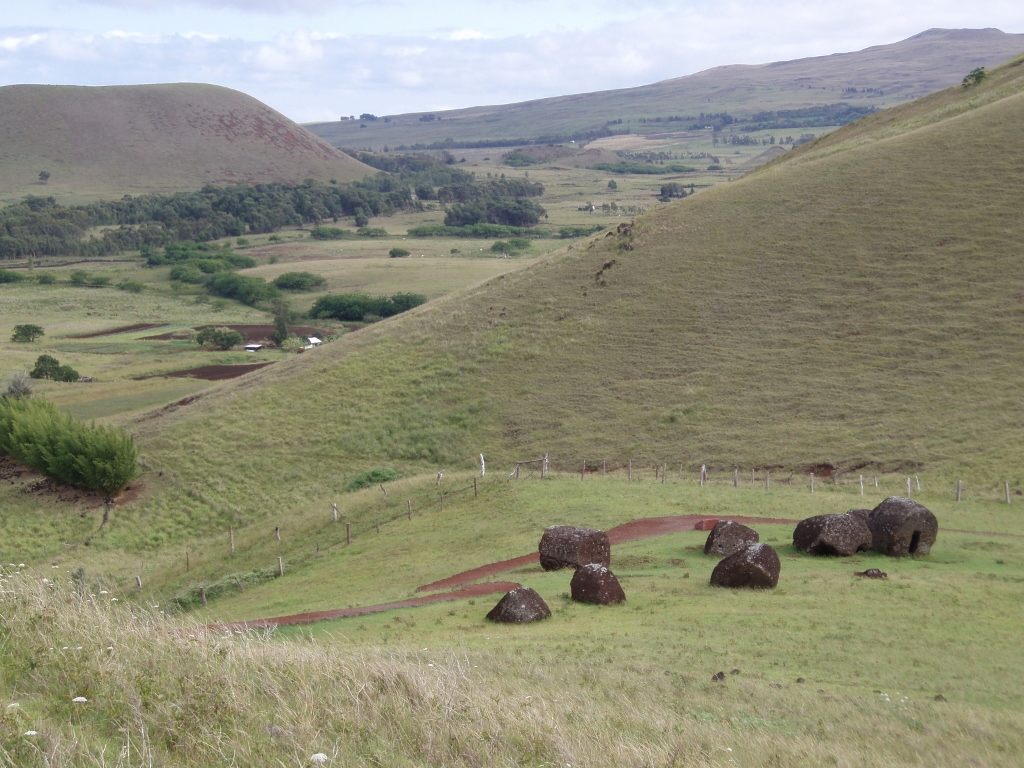 Puna Pao
Puna Pao
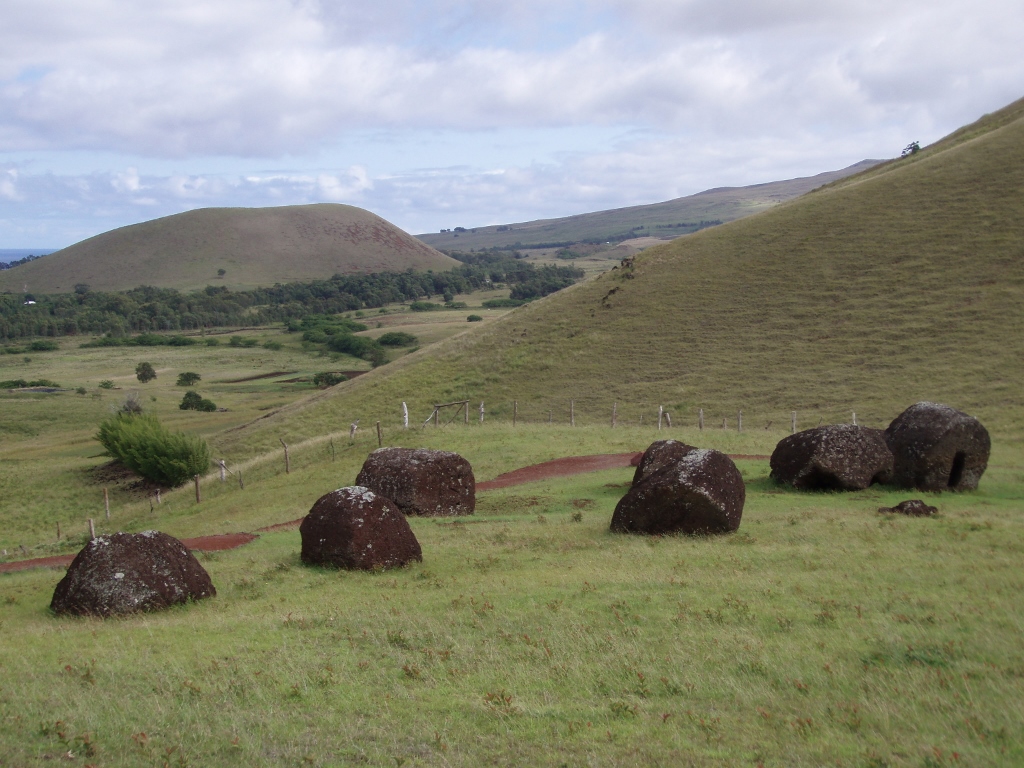 Puna Pao
Puna Pao
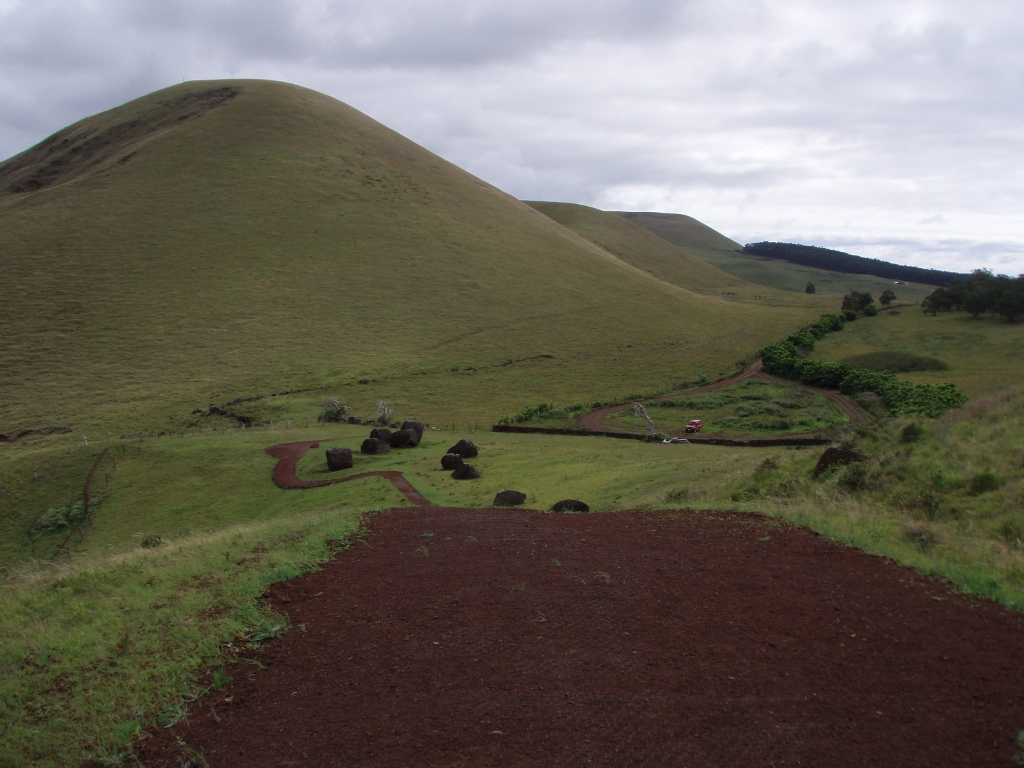 Puna Pao; mark the parked little red four-wheeler
Puna Pao; mark the parked little red four-wheeler
As you can see from the photographs here again I was completely alone when walking around Puna Pao, but when I started to go down to the car, other visitors were arriving as well.
Driving slowly along the road that cut through the island and enjoying the views around me, I reached the Anakena beach. When I got out of the car, I first took some photos in order to take advantage of the morning sun as much as I could, which turned out to be good since later on there were occasional clouds in the sky.
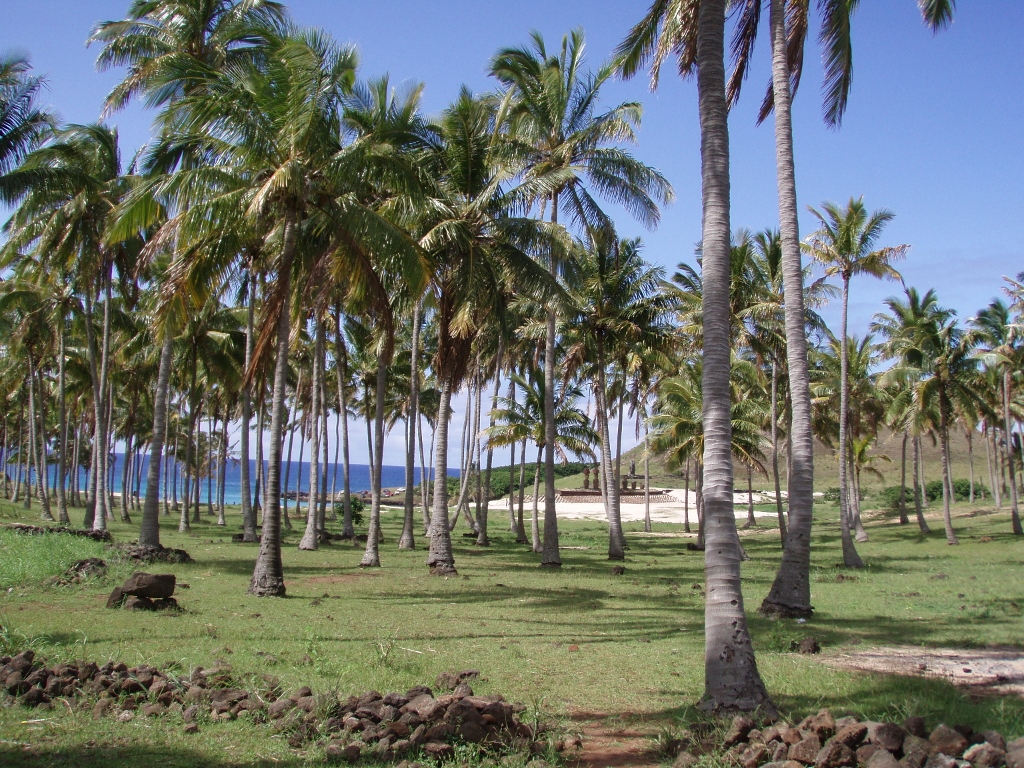 Approach to the Anakena beach
Approach to the Anakena beach
Ahu Nau Nau also appeared different when the sun shone on its front.
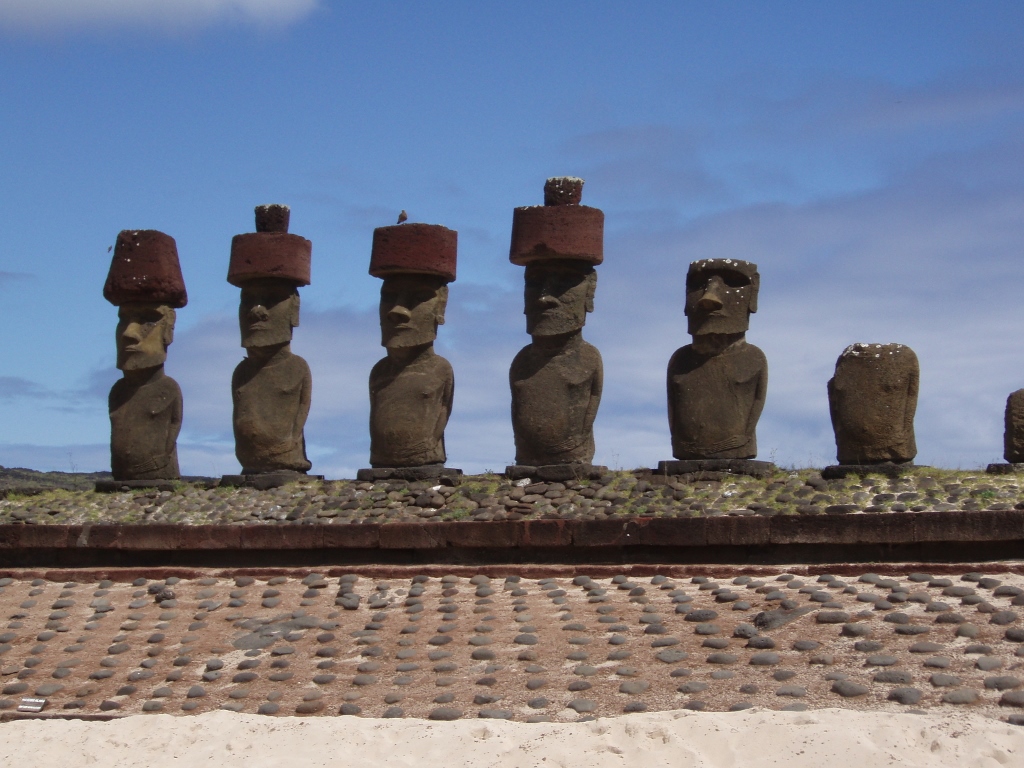 Ahu Nau Nau
Ahu Nau Nau
On the next photograph it is possible to see nicely some details of the moai body. There are the breasts and a navel, as well as arms and hands. Although the proportions are not harmonious, this still required great skill and creative impulse.
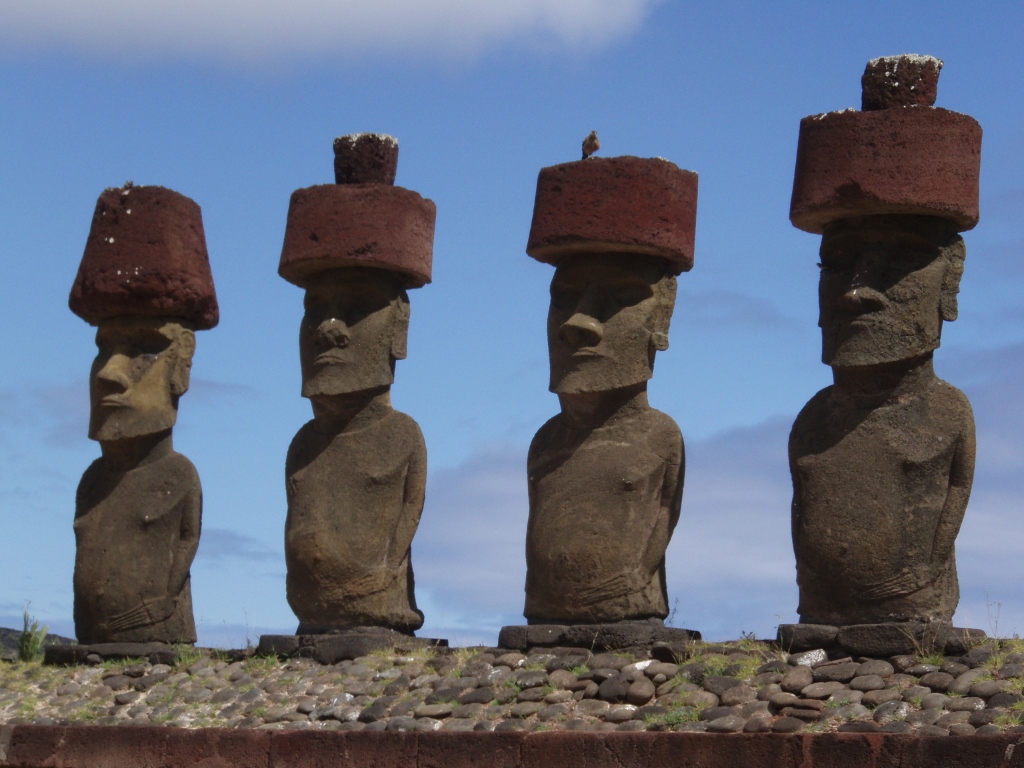 Ahu Nau Nau with nicely visible details of the moais
Ahu Nau Nau with nicely visible details of the moais
I don’t know why, but during my stay on the island I thought that the beach and swimming were not mandatory or very important. What a mistake I would have made had I stuck to this idea! This way, as soon as I got to the beach, I just left my things on a pile, put on some sun-screen and rushed into the water. It was fabulous!
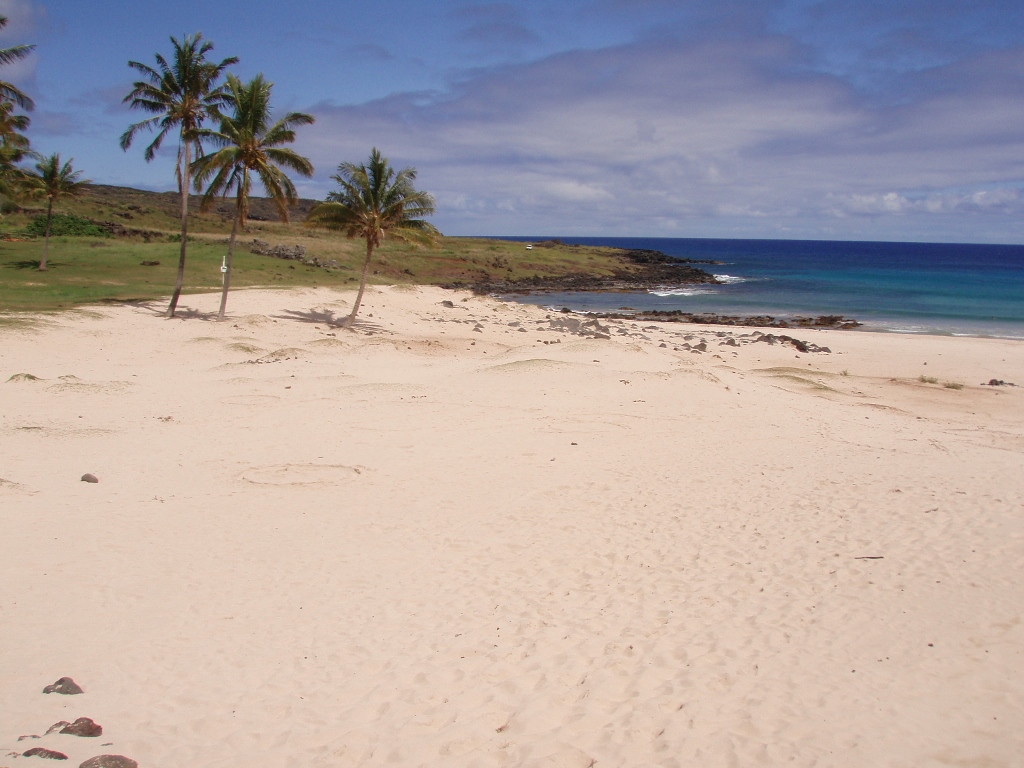 Anakena beach
Anakena beach
Afterwards I sat in a partial shade under a palm tree and there I read for a while until I got dry. In the meantime more beachgoers came, but it was not crowded. When I dried, I went into the water again to refresh myself, but I also swam a little farther from the beach. Still, all the time I stayed within the bay.
When I got out, I remained on the beach only for a little while longer, since the shadow of the palm tree moved enough to expose the entire beach to the bright sun and I don’t like to be that much in the sun. So, I went to the other end of the beach from where I enjoyed the beautiful view and then I went back to the car.
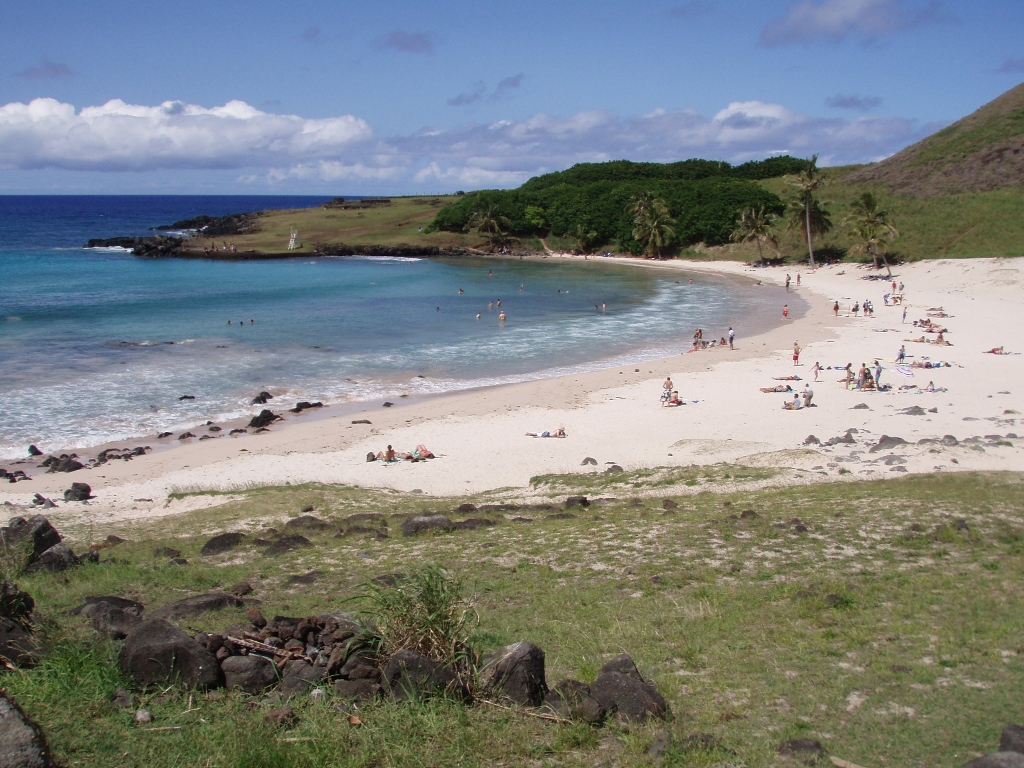
Anakena beach
While I was changing into dry clothes near a wooden picnic bench among the palm trees, I enjoyed the birdsong and the sound of the ocean which I could hear there, as well as the wonderful fresh and clean air that filled up my lungs. Then, in the car I continued with by tour following a dirt road that leads parallel to the north coast of the island.
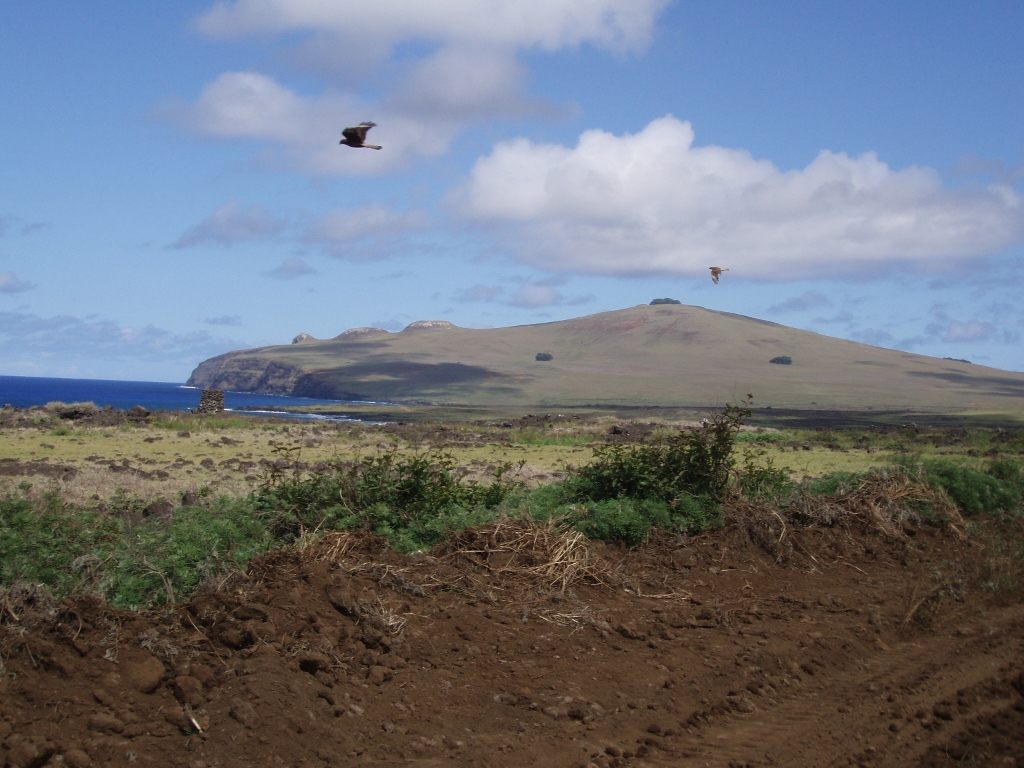 Dirt road leading in the direction of Poike peninsula
Dirt road leading in the direction of Poike peninsula
First I stopped at Ahu Te Pito Kura. There is the biggest moai that has left the Rano Raraku “workshop” and that has been placed on an ahu. It is presumed that it was one of the last to fall down. It is 10 metres high, or rather long, as it is toppled down. Its earlobe alone is 2 metres long.
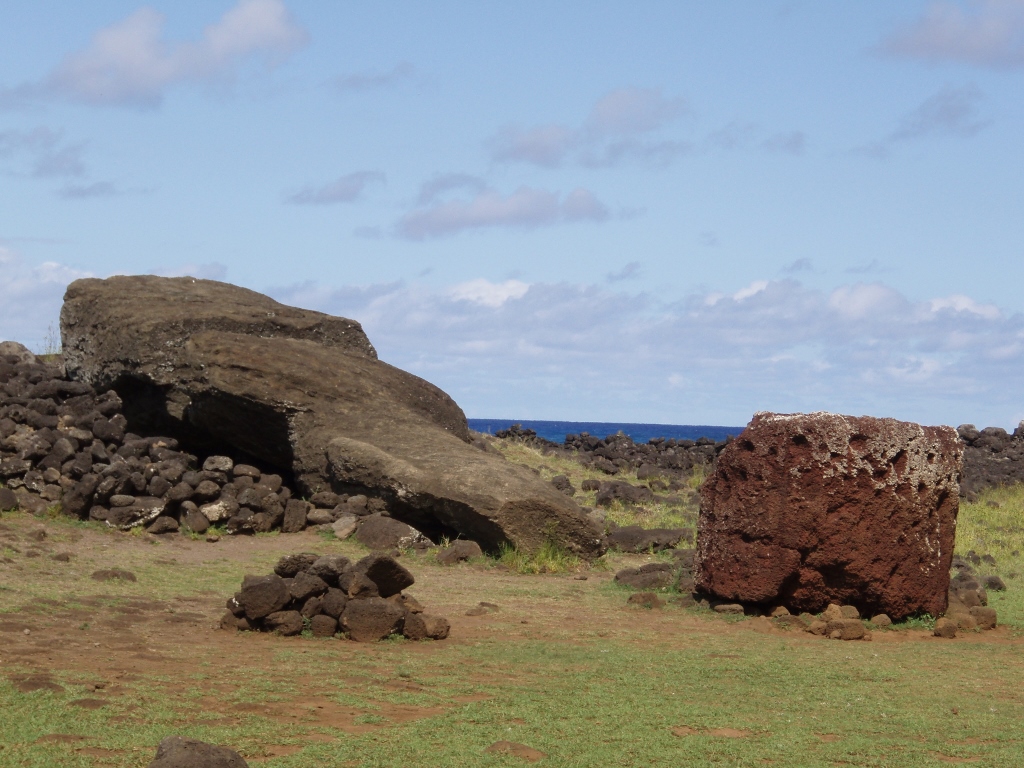 The toppled moai at Ahu Te Pito Kura
The toppled moai at Ahu Te Pito Kura
By the way, Te Pito Kura means “the stone of light” and there in the vicinity of the ahu is the stone which according to the legend was brought by Hotu Matu’a himself. The place where the stone is positioned, in the opinion of the indigenous population of Rapa Nui, was the navel of the world (or is still supposed to be that). It is interesting that here I looked for the stone in line with the instructions given in the guide book, but I just couldn’t locate it. I saw a stone for which I thought might be the one, as it had some unusual indentation, but I was extremely suspicious. Over time it turned out it was not THE stone. Still, I’m not worried. There is the task for me for the next time when I go to Easter Island.
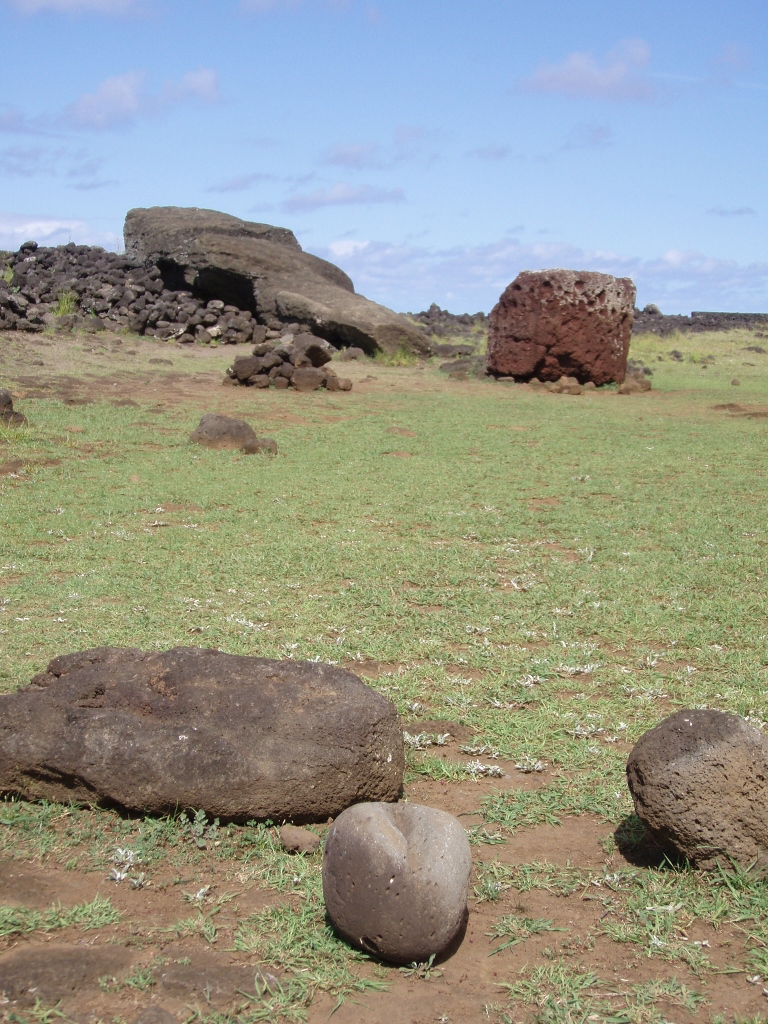 The toppled moai at Ahu Te Pito Kura and it in forefront of the photo is the stone which to me appeared particular and different from the others
The toppled moai at Ahu Te Pito Kura and it in forefront of the photo is the stone which to me appeared particular and different from the others
Still, without any worry on account of not locating Te Pito Kura, I went on. All the time in front of me there was the cone of Maunga Pu A Katiki volcano. I particularly fancied two side craters, which seemed to me as if somebody had turned over two gigantic plates of soil onto the volcano’s slope.
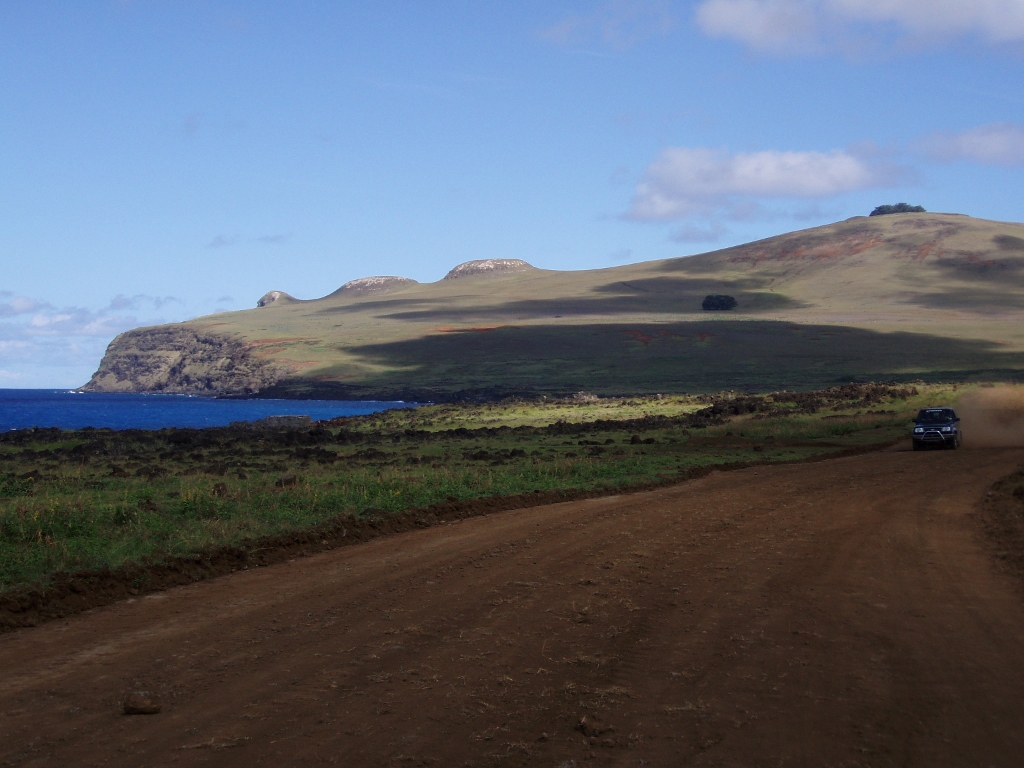 Maunga Pu A Katiki volcano in front of me
Maunga Pu A Katiki volcano in front of me
The next stop was at Ahu Tongariki. I had already been there one morning (see: Chile 2006, part 15) and then I said to myself I would love to come back again during an afternoon when the light would be better to see the moais. And so it was. This time it was not cloudy and the light was truly perfect for enjoying in watching the moais, as well as for taking photos.
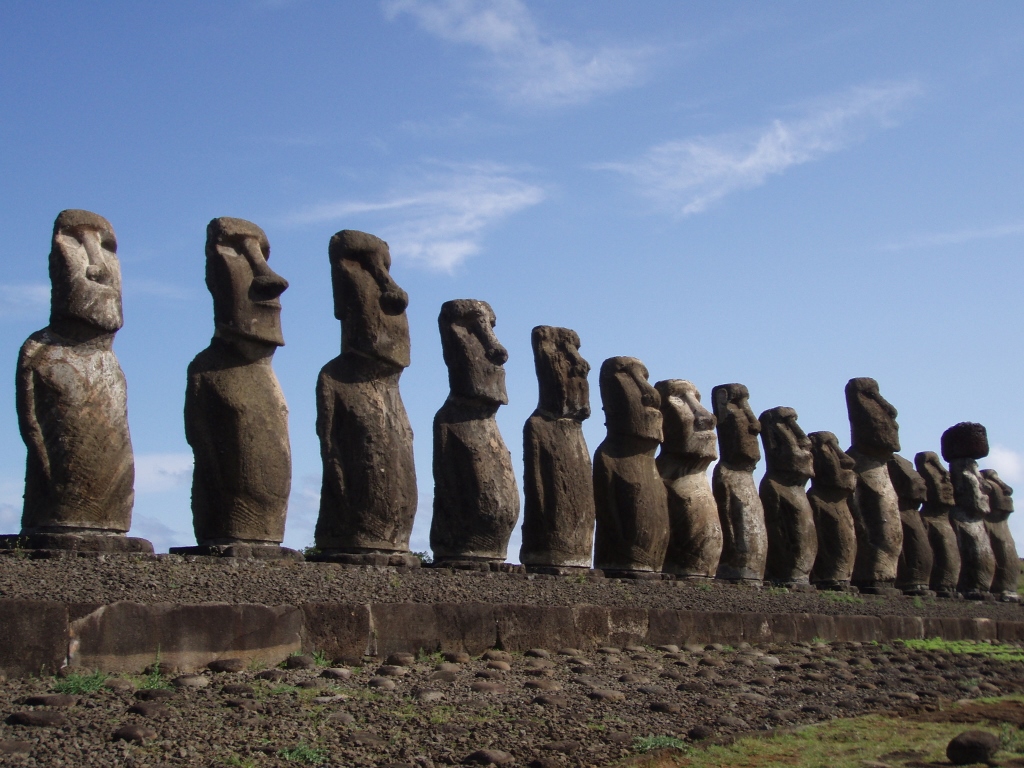 Ahu Tongariki
Ahu Tongariki
I was so content, that I could barely bring myself to get away from this place and when I eventually did it, soon after I would stop at some other point from which there was yet another wonderful view at Ahu Tongariki.
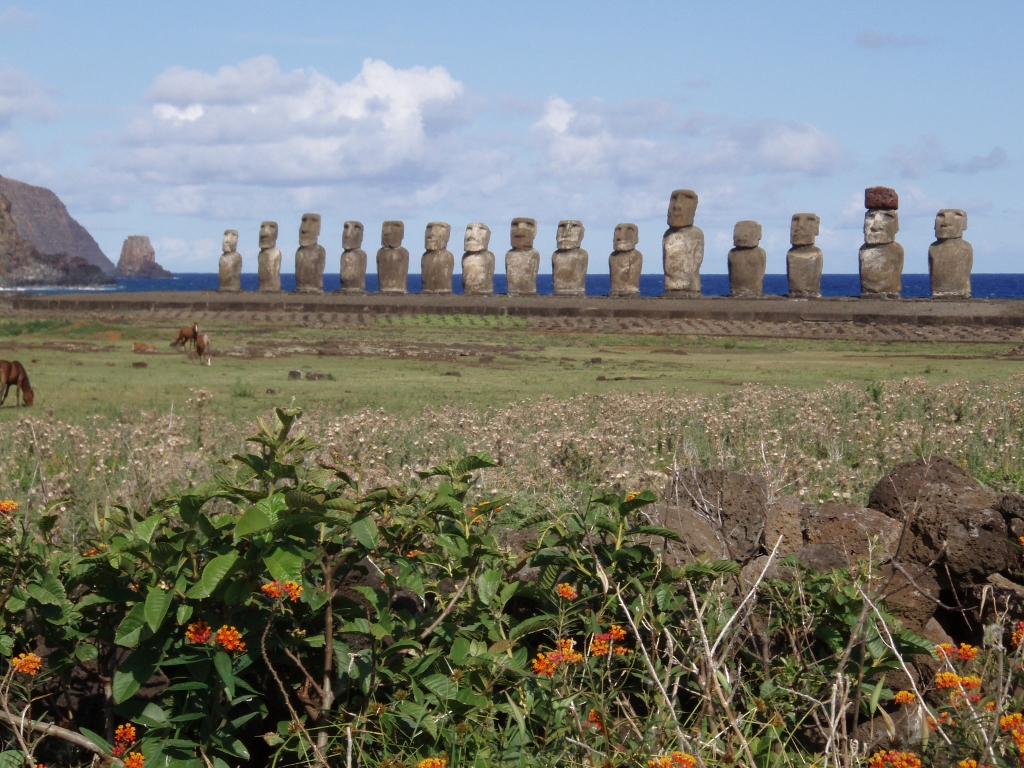 Ahu Tongariki
Ahu Tongariki
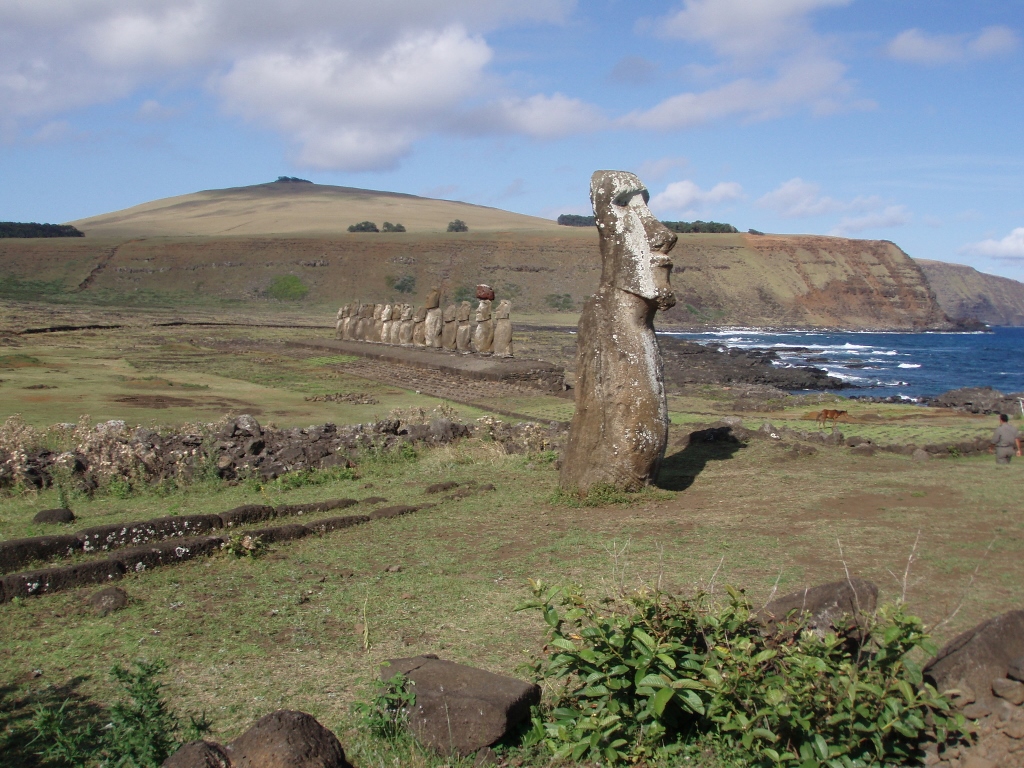 The lonely moai and Ahu Tongariki
The lonely moai and Ahu Tongariki
Even when I moved in the direction of the nearby quarry-nursery on the slopes of Rano Raraku volcano, I would stop the car, get out and look back. And I was not disappointed.
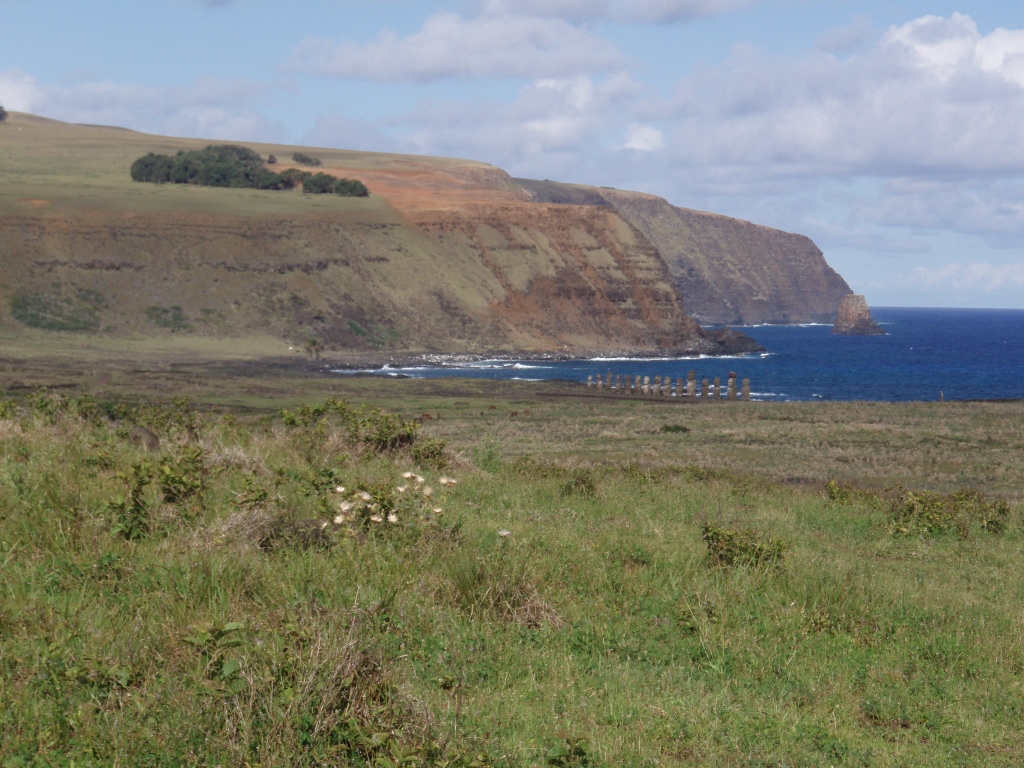 Ahu Tongariki in the distance
Ahu Tongariki in the distance
Still, there was a new visit to Rano Raraku volcano with its nursery waiting for me. Before I got there, I wondered again at this huge number of moais that were simply standing on the slope.
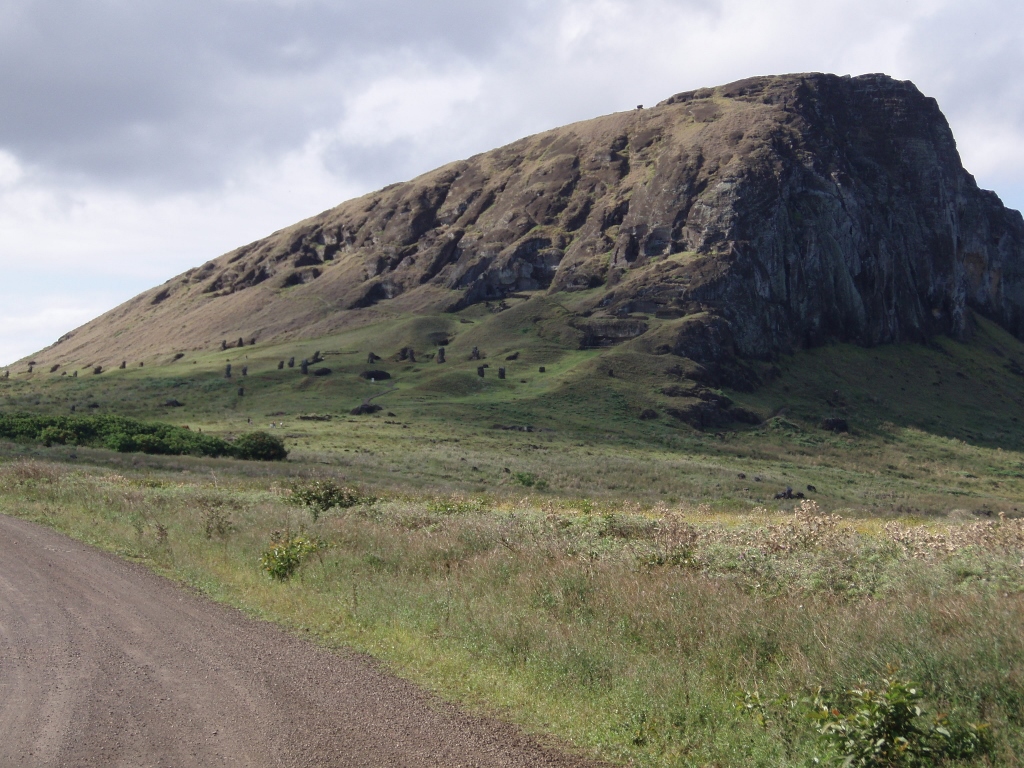 Slope of Rano Raraku volcano where it is possible to see the scattered moais
Slope of Rano Raraku volcano where it is possible to see the scattered moais
Again I walked among the moais that were lying on the slope considerably covered in earth. And yet, just like when I was at Ahu Tongariki, here I also had an unusual feeling as if I saw, but truly saw the moai for the first time. Whether it was a question of the light, or the fact that I didn’t have to kill myself by walking to get here, or that I was not torched by the sun, or that I had previously been to Ahu Te Pito Kura where although not finding the stone marking the Navel of the World, i.e., the centre of the world, I was nonetheless exposed to its special energies, still that “encounter” with the moais was specifically heightened and extraordinary this time. And the moais were truly stunning!
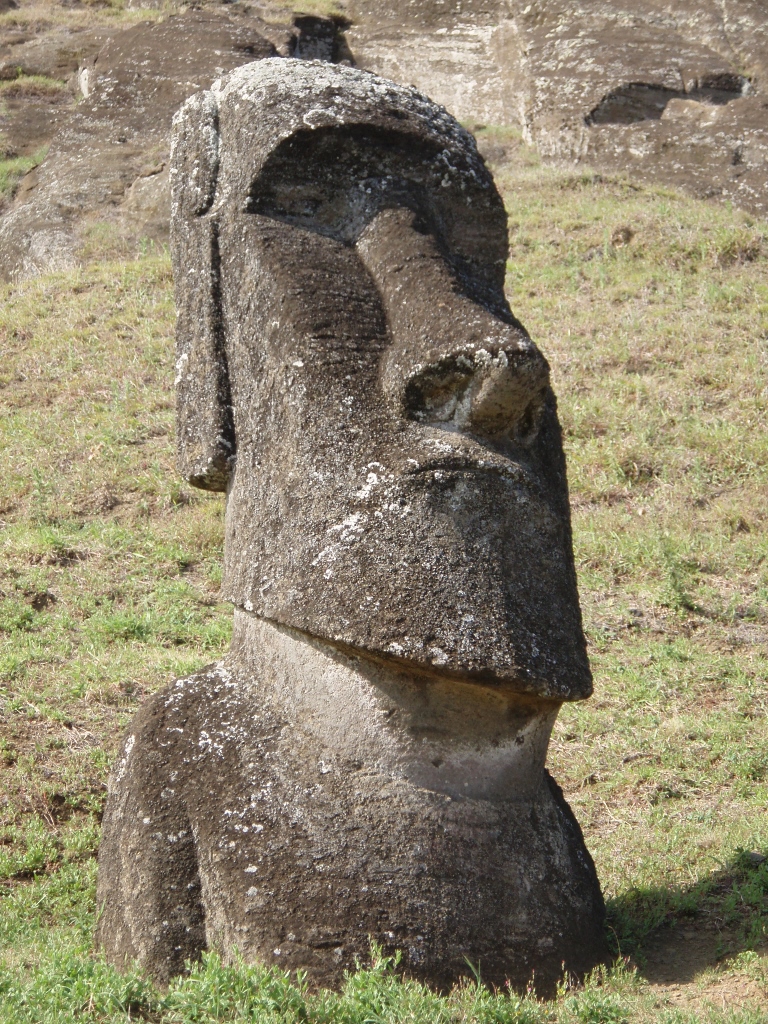 Slope of Rano Raraku volcano
Slope of Rano Raraku volcano
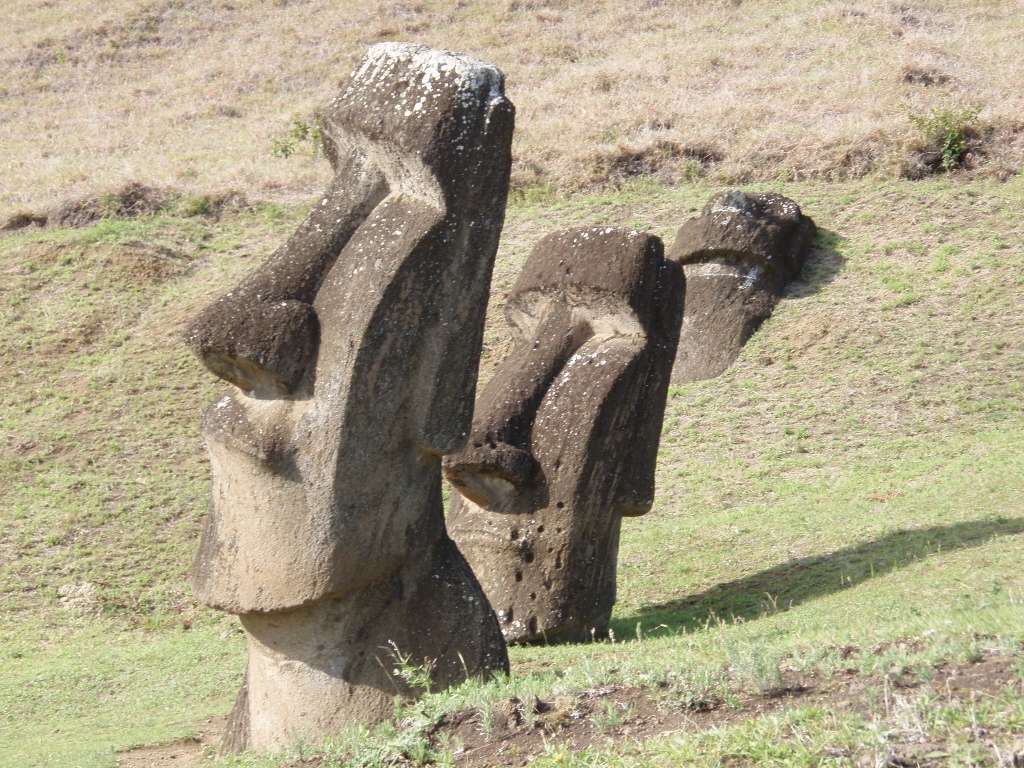 Slope of Rano Raraku volcano
Slope of Rano Raraku volcano
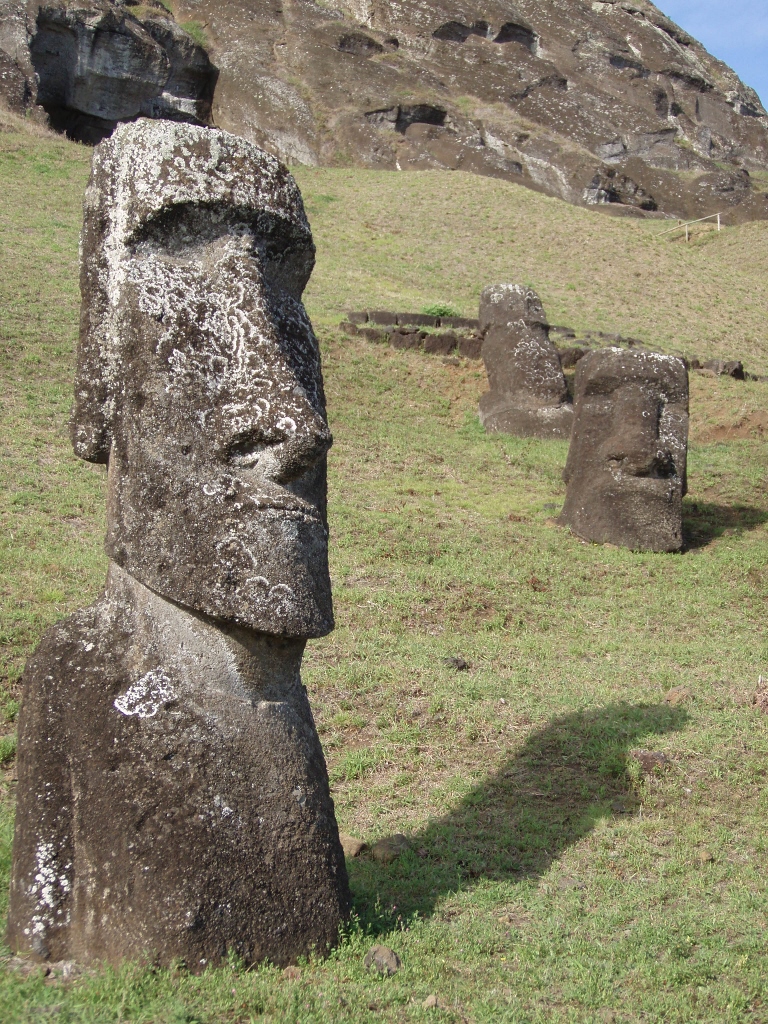 Slope of Rano Raraku volcano
Slope of Rano Raraku volcano
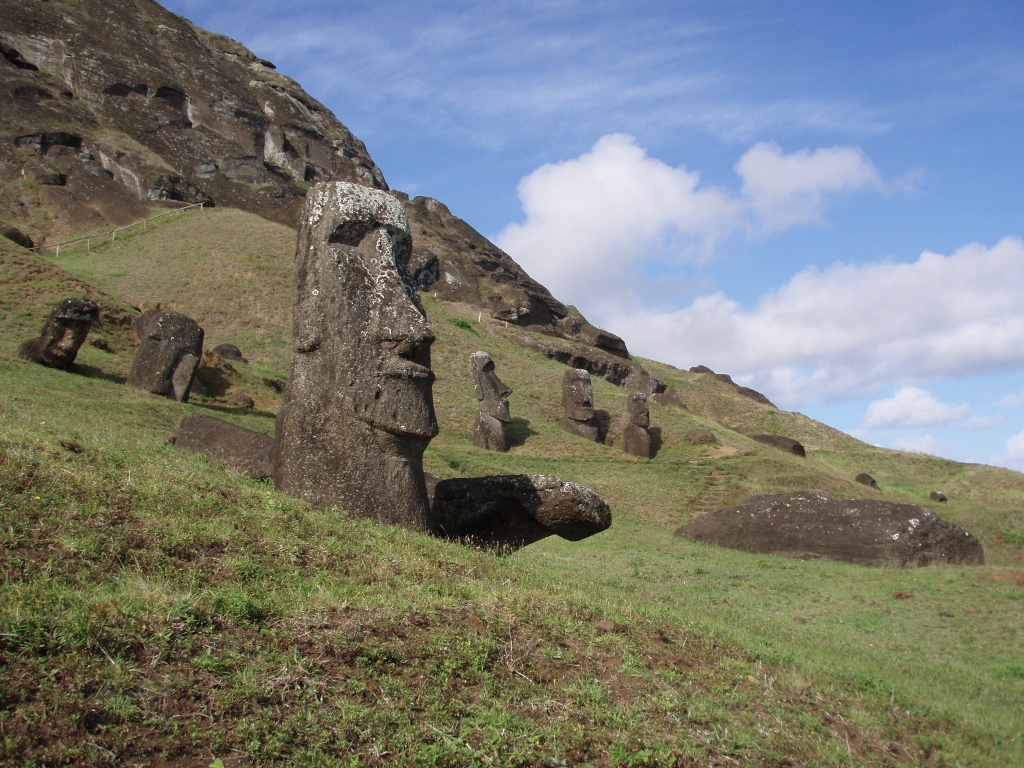 Slope of Rano Raraku volcano
Slope of Rano Raraku volcano
From Rano Raraku I drove in the direction of Hanga Roa along the road near which I had walked a few days earlier and I can say that that section is definitely HORRIBLY boring and it was only then that I realized how silly it was to walk there at all. As I drove slowly, even my singing of some melodies was not sufficient to kill the boredom and the monotony of the whole episode. Only occasionally a certain view at the coast, the ocean, the waves and the sun reflection diminished the tiresome experience. When I reached the first trees and forests once again I became aware of my love for trees – any trees, as long as they are there.
And then I also went to Ahu Vinapu. Beside it there is another ahu and according to the records of 18th and 19th century sailors and travellers, they were destroyed at different times and this is where the story about them apparently ends. However, Ahu Vinapu is unique on the entire Easter Island. Its significance lies in the fact that the ahu itself, that is, its back part which carries the load was made of large boulders exactly in the manner used by the Incas, i.e., by using very precisely chiselled and fitted rocks.
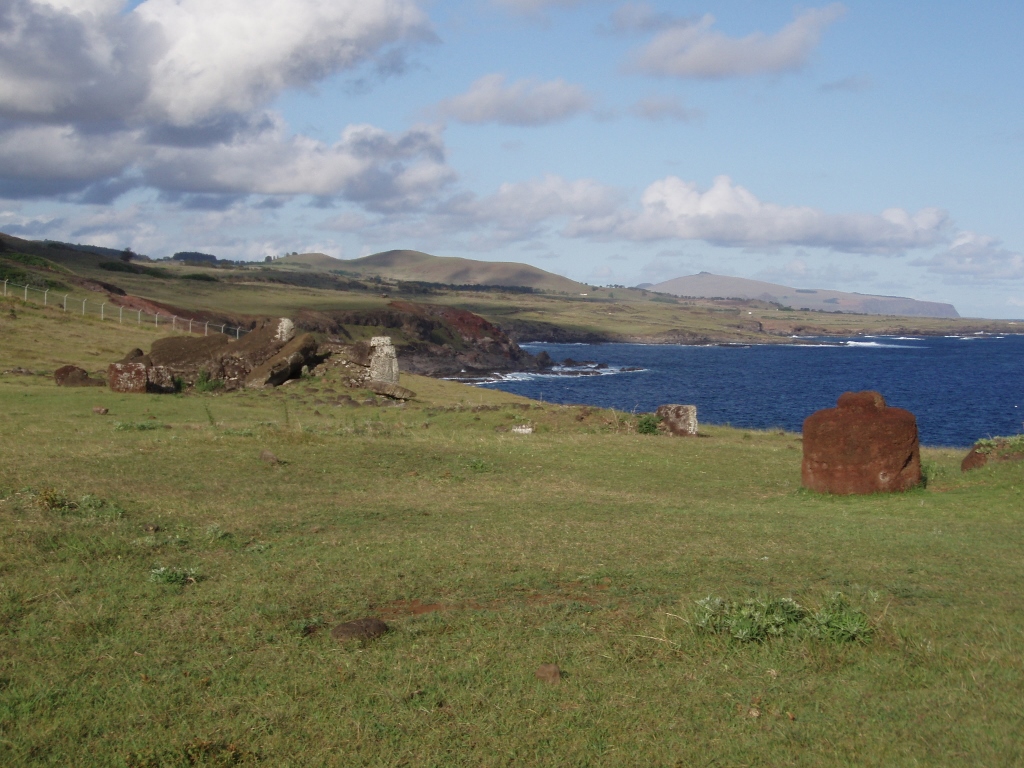 Ahu Vinapu with Poike peninsula in the distance: an ahu apparently like any other
Ahu Vinapu with Poike peninsula in the distance: an ahu apparently like any other
This puzzles scientists, but I am puzzled that they are puzzled. I’m not. This is how. Once upon a time, when I was a little girl, there was a whole series of fairy-tales of the world published in line with geographic/national affiliation. I LOVED fairy-tales! So much so that later, when I grew up, I bought as second-hand all the books from the edition which I didn’t already have. Nowadays, when planning a longer journey, a part of the preparations consists of reading the fairy-tales of the people who live at my given destination. Thus, before going to Peru I read the Incas’ fairy-tales and there was a story “Unusual campaign of Túpac Yupanqui” which clearly spoke of a campaign of this Inca that had led him to an island in the west, as well as of his return to the Empire of the Inca together with several representatives of the people that lived on that island. These people had different face features, curly hair and dark skin! (Galapagos is out because they could have brought only iguanas and tortoises from there.) I know that fairy-tales are not a precise account of any event, but oral tradition has its foundation in real events with gradual enrichment with archetypes. On the other hand, Ahu Vinapu supports a possible authenticity of this fairy-tale from the “other side.”
On the other hand, the existence of this support wall at Ahu Vinapu is used by the advocates of the theory that the Rapa Nui originally came from the continent. The Rapa Nui themselves claim that they are Polynesians, which makes sense taking into account their physical and linguistic characteristics. Still, regardless of which theory is more probable, the appearance of this manner of constructing an ahu is truly very interesting.
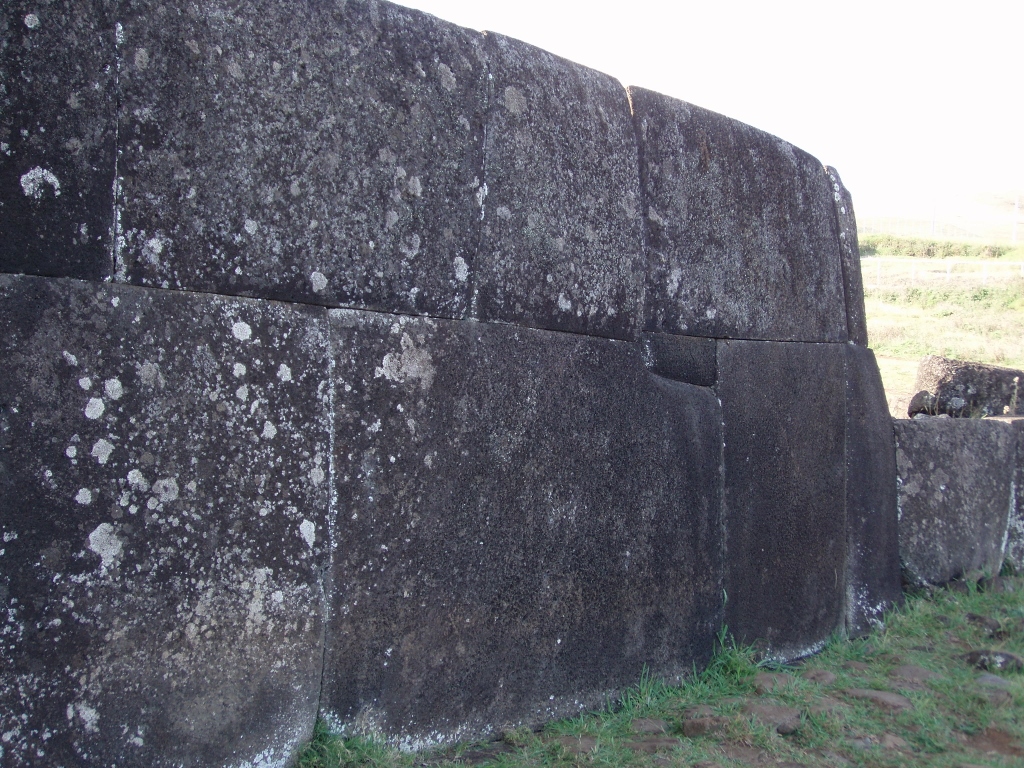 Ahu Vinapu, the ahu’s support wall
Ahu Vinapu, the ahu’s support wall
Be as it may, after my visit to Ahu Vinapu I went by car to the centre, going to an internet café, as well as to the cathedral. Then I went back to my room as I needed to pack. In addition, as a matter of fact, I was starting to get rather tired from the whole day, the sun, my moving around, impressions and the rest of it, so I was really happy to have an “excuse” to go back to my room.
The renting of a car that day was a perfect thing to do. I managed to accomplish everything I wanted to do and I was extremely content. The impressions linked to the light at Ahu Tongariki and Rano Raraku volcano were particularly strong. They were spectacular! And then, with those images in my head I went to sleep.
The following day, with no hurry and after a late breakfast I went to the nearby airport by car. This time getting to the airport was stress-free and it only added to the overall satisfaction that I was on Easter Island and that everything turned out in the best possible way. With me on the plane was that Polish gentleman, Artur, whom I met the first days at the B&B where we both had stayed. This time we also had a great chat and he gave with me some advice about travelling for which I am grateful. In the evening I was already in Santiago, but before that, one more greeting from Rapa Nui!
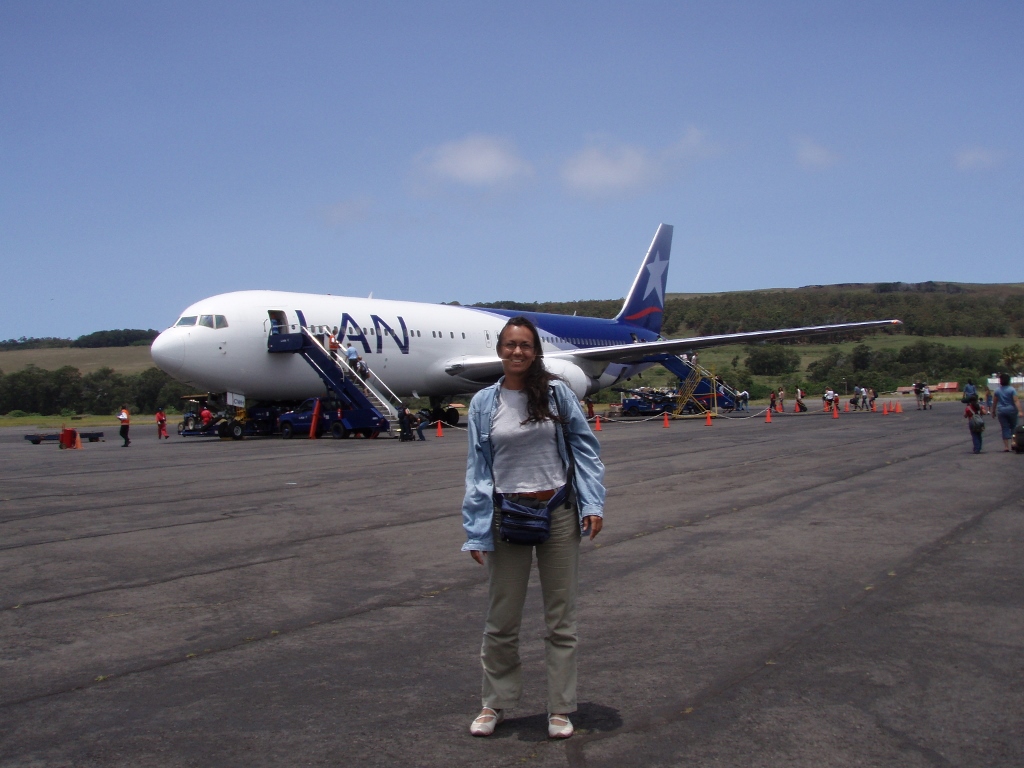 Ready for the return from Easter Island
Ready for the return from Easter Island